Best Video Cards: March 2014
by Ryan Smith on March 24, 2014 9:00 AM EST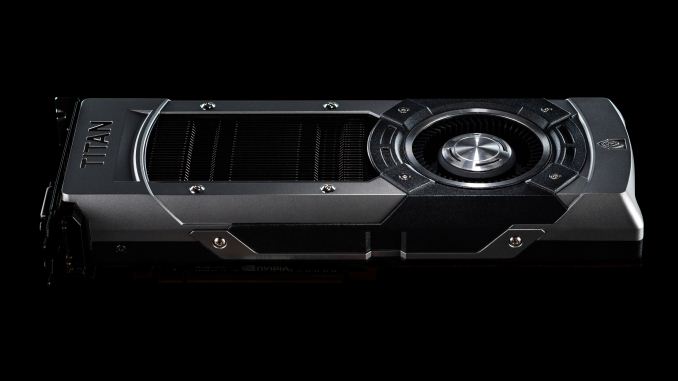
We’re back once again with our regular guide to desktop video cards, this time for March of 2014.
Since our last update in January 2014, we’ve seen some significant shifts on both the high-end and low-end of the market. On the low end we’ve seen AMD introduce the Radeon R7 250X and the Radeon R7 265 to shore up their competitive positioning in the sub-$150 markets. Meanwhile NVIDIA has launched the first of their new Maxwell series of cards, the GeForce GTX 750 series, to do battle in that price segment. Unlike the competitive positioning prior to these launches, AMD and NVIDIA have pulled apart a bit in their technical capabilities and pricing, so we have two families of cards that aren’t quite as close substitutes to each other as before.
As for the high-end of the market, we’ve seen a pair of new product launches. From NVIDIA we have the GeForce GTX Titan Black. Titan Black is fundamentally a 6GB version of the GTX 780 Ti with increased GPU clockspeeds, and like the previous Titan, the Titan Black is NVIDIA's entry level prosumer double precision compute card, thanks to its unlocked FP64 performance. Unlike the original Titan though, the lead over its closest competitor (GTX 780 Ti) is slim, so while it's still the fastest gaming card around the $320 (~50%) premium means most gamers are better served by the GTX 780 Ti and leaving Titan Black to compute tasks.
Meanwhile from AMD we have the Radeon R9 280. The R9 280 isn’t based on any new GPU from AMD – it’s essentially just a rebaged Radeon HD 7950 – but it goes hand-in-hand with AMD’s supply and demand situation coming back into balance. After a period of $900 R9 290Xs, the R9 280 has heralded shifts in supply and demand that have almost entirely corrected the prices of AMD cards in a matter of weeks. Cryptocoin Mania seems to have subsided to a degree as coin prices have softened and difficulty curves have increased (not to mention spring is upon us), and while it’s hard to directly measure supply, the fact that the R9 280 remains in supply is as good an indicator as we can hope for that supply stands stronger than before. As a result most AMD cards are only running slightly above their MSRPs (R9 290 excluded), which significantly improves AMD’s competitive positioning above $200.
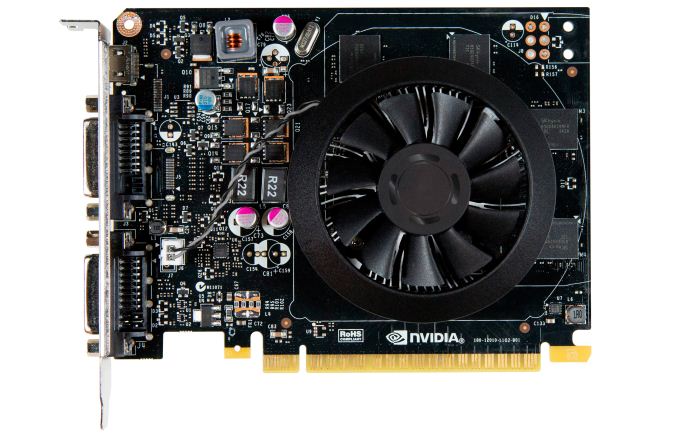
Recently Launched: GeForce GTX 750 Series
Finally, we’ve also seen some inventory drawdowns on both sides as card families are prepared for retirement. For AMD cards the supply of Radeon 7700 series cards is finally drying up, shifting our focus to the 200 series from top to bottom. Meanwhile NVIDIA’s GTX 650 Ti is now starting to come in short supply – having been replaced by the GTX 750 Ti – and it’s likely that the rest of NVIDIA’s GK106 based products will soon follow. As a top-end GK106 card is not much faster than a top-end GM107 card, we don’t expect NVIDIA will want to be producing the larger GK106 for too much longer.
Anyhow, market summaries behind us, let’s look at individual recommendations. As always, we’ve laid out our ideas of price/performance bands and recommendations in our table below, with our full explanations and alternative options to follow. For this edition we’ve tweaked our bands in response to the recent product launches from AMD and NVIDIA. But in the case of the sub-$200 market it’s worth pointing out that there’s a video card for roughly every $10, so picking a good video card is as much about budgets as it is finding an especially strong card.
| March 2014 GPU Performance Guide | ||||
| Performance Band | Price Range | Recommendation | ||
| 1080p (Low) | $99-$149 | AMD Radeon R7 250X | ||
| 1080p (Med) |
$149-$209
|
|||
| 1080p (High) |
$209-$329
|
|||
| 1440p (Med) |
$329-$499
|
|||
| 1440p (High) |
$499-$679
|
|||
| 1440p (Max) |
$679+
|
|||
| 4K/Multi-Monitor (High) |
$1200+
|
|||
As a general recommendation for gaming, we suggest starting at $99. There are cards below this price, but the amount of performance you have to give up below $99 far outweighs the cost. Even then, performance gains will generally exceed the price increases up to $150 or so.
Meanwhile for gamers looking for high quality 1080p gaming or better, that will start at $209. Going above that will find cards that are good for 1440p, 4K, and multi-monitor, while going below that will find cards that will require some quality sacrifices to stay at 1080p.
Budget (<$100): AMD Radeon R7 250X
With the supplies of the Radeon HD 7770 finally drying up, we’ve changed our recommendation over to the Radeon R7 250X, a card that is for all intents and purposes the HD 7770 all over again. As a straight-up rebadge of the 7770 the performance and many of the designs are identical, making this neither an advancement nor a regression in performance at $99. At the same time NVIDIA’s closest cards remain more expensive for the performance, so the R7 250X will outperform any AMD or NVIDIA card at similar prices, making it the fastest thing at this price.
From a performance perspective the R7 250X isn’t going to quite hit the sweet spot we outlined earlier, but for those gamers on a strict budget it will get the job done. In the long run it should be able to run most games even at 1080p with medium-to-low settings, along with keeping texture quality down a notch to account for its 1GB of VRAM. Battlefield, GRID 2, and even Total War: Rome 2 can easily hum along on this card at decent settings at 1080p.
Mainstream Sweet Spot ($149): AMD Radeon R7 265
With the recent launch of the Radeon R7 265 and the GeForce GTX 750 series the sub-$150 market has become rather crowded, and in response we’ve moved our mainstream sweet spot performance mark to $149. The $10 increase comes with access to a much more powerful video card, and some interesting alternatives.
Our primary recommendation is the Radeon R7 265, AMD’s recently launched Pitcairn card designed to lock in this price point. Essentially a 7850 with a higher GPU clockspeed and a revised memory bus allowing for higher memory clockspeeds, the R7 265 is some 24% faster than the R7 260X that used to occupy this spot. The R7 260X meanwhile lies in limbo between the $99 R7 250X (for the price conscious) and the new sweet spot of the R7 265.
From a performance standpoint the R7 265 not going to be able to play every game at 1080p at high settings, but it will be fast enough for medium-to-high depending on the game, which will be a couple of notches higher than what the $99 cards can do. Meanwhile the 2GB of VRAM will mean that future games shouldn’t bog down the card quite as badly; higher graphical fidelity games will slow it down like any other card, but there’s enough VRAM to keep up with the demands of higher resolution textures and heavier use of intermediate buffers.
Runner Up: NVIDIA GeForce GTX 750 Ti
Since our guide is written on the assumption that most buyers are looking for the best performance at a given price, our performance recommendations are going to favor AMD, as they’re more willing to throw out larger, more powerful cards at these sub-$200 price bands. NVIDIA on the other hand isn’t going to be able to directly compete with AMD on price/performance, but they do have an interesting technological advantage for gamers who are looking for a different set of tradeoffs.
Thanks to NVIDIA’s new Maxwell architecture, at $149 they’re able to offer the GeForce GTX 750 Ti, a card that offers performance approaching the R7 265 with much lower power consumption. The GTX 750 Ti is a sub-75W card – no external PCIe power connector required – allowing it to work in cases and systems where the near-150W R7 265 cannot, while also offering the improved acoustics that come with lower power consumption. So for OEM upgrades, or buyers just looking for something even quieter, the GTX 750 Ti is an interesting alternative. Just keep in mind that from a performance standpoint it trails the R7 265 by about 16%.
There are also a pair of options between here and the R7 250X that bear mentioning. The R7 260X now resides at $119 and goes up against the GTX 750, with AMD holding a performance advantage similar to R7 265 vs. GTX 750 Ti. We’re fans of stepping up to the greater performance of the $149 cards, but it does offer something between $99 and $149.
1080p Gaming ($209): AMD Radeon R9 270X
Moving up our product lists, at $209 we’re finally up to cards that are fast enough to play most games at 1080p with high-to-ultra settings. More powerful/expensive cards will offer a further edge for the most demanding games, along with offering a bit more longevity, but for most games at the extremely common resolution of 1080p, it only takes $209 to hit a great level of graphical fidelity for that resolution.
To that end there is no better card at this price than AMD’s Radeon R9 270X. Based on a fully enabled Pitcairn GPU, 270X easily offers the most bang for the buck, keeping its distance from NVIDIA’s GTX 660 while getting rather close to NVIDIA’s more expensive GeForce GTX 760. The only catch right now is that 270X prices a running a hair over MSRP; while they’re supposed to start at $199, in practice they start at $209. For a $10 difference we’re not going to make much of a fuss, but it does mean that AMD technically misses the $199 mark by a Hamilton.
Runner Up: AMD Radeon R9 270: Briefly, AMD’s lower tier R9 270 card makes for a good runner up here. The performance is still strong, but more importantly 270 is AMD’s top 150W card, for those gamers looking for something that will work with a limited capability PSU. Asus’s 270 DCUII OC absolutely floored us here in recent testing, producing next to no noise.
Reaching For 1440p ($329): NVIDIA GeForce GTX 770
The recent swing in AMD’s supply and demand situation has greatly improved things for AMD at and above $200, especially for their closest competitor for this segment, the R9 280X. The introduction of the R9 280 also throws out some more competition at lower performance but with a lower price. Still, with R9 280X cards starting at $350, the GeForce GTX 770 is going to offer the better balance of price and performance if we’re to make a run at 1440p without spending too much.
For the GTX 770 we’re looking at a card that will straddle 1080p and 1440p. It’s not quite fast enough to work in every game at 1440p with high quality settings, but it’s fast enough for many of them. Alternatively, it’s fast enough at 1080p that it has no problem at that resolution with everything cranked up, including high levels of MSAA and even SSAA in some games. The only area where it may come up short is VRAM, which at 2GB is enough for today, but it probably won’t have as much headroom for 1440p in the future. There are 4GB cards, but that will carry a $30+ premium.
Meanwhile for bundle bonuses, the GTX 770 (and all other 760+ series cards) qualifies for NVIDIA’s new Spring 2014 game bundle. The spring 2014 bundle includes a free copy of Daylight, a value priced game that none the less at least sweetens the pot a bit in NVIDIA’s favor.
Runner Up: AMD Radeon R9 280
I can’t really make an argument for the R9 280X here, as it’s a card that’s meant to be priced under the GTX 770 and performs accordingly. However another option is the Radeon R9 280, an analog of the Radeon HD 7950. From a price/performance perspective it’s not as strong as the GTX 770 – the GTX 770 leads by more than the 10% difference in price – but for price-sensitive buyers, it’s going to be the best option strictly at $300.
Extreme Performance with Refinement ($499): NVIDIA GeForce GTX 780
As we briefly mentioned earlier in our market summary, the next step up in video cards after the GTX 770 doesn’t occur until $500 with the GTX 780. Unfortunately this leaves something of a large gap that the Radeon R9 290 used to close, but in the current market that’s no longer an option.
Positioned as NVIDIA’s lowest tier GK110 card, the high performance offered by the GeForce GTX 780 means it should be fast enough to run virtually anything at 1440p with high-to-extreme settings, and 1080p gamers should have no trouble hitting 120fps in anything that isn’t CPU limited to begin with. To that end the GTX 780 is the cheapest card that can drive all sub-4K single-monitor setups, giving it a sweet spot position of its own in the current market.
As an added bonus, even at the $499 base price this gets access to NVIDIA’s amazing metal cooler, which in our tests is enough to keep noise levels under 50dB. So for gamers looking for a balance between performance and noise with a blower, the GTX 780 is a star. Meanwhile for gamers looking at open air coolers, GTX 780 cards with alternative coolers such as EVGA’s ACX cooler will find that the GTX 780 can be even quieter for the usual tradeoff between a blower and an open air cooler.
Also, like the GTX 770, the GTX 780 qualifies for NVIDIA’s Spring 2014 game bundle, which means it includes Daylight.
Runner Up: AMD Radeon R9 290
As a runner up we have AMD’s Radeon R9 290, whose prices are finally falling back below $500. The 290’s strong suit was as a spoiler at $400; at $480 it offers performance similar to the GTX 780, but it loses rather badly on noise/build-quality, especially if we’re talking about reference cards. The rise of semi-custom designs and the price drops have helped to improve the R9 290’s fortunes, though at this point we still give the edge to the GTX 780. The NVIDIA metal cooler is very hard to pass up for an extra $20, but with the better acoustics of the semi-custom coolers the R9 290 is once again a viable alternative here.
Taking the Single-GPU Crown For Gaming ($679): NVIDIA GeForce GTX 780 Ti
For our next selection past the GTX 780, we hummed and hawed a bit before deciding to pass up the Radeon R9 290X and settle on the GeForce GTX 780 Ti. Simply put, with average 290X prices at $600, there’s little reason not to pay another 10% or so and pick up the even faster GTX 780 Ti, which excluding the specialty GTX Titan Black is the best single-GPU gaming card on the market. To that end, as NVIDIA’s more affordable fully-enabled GK110 part the GeForce GTX 780 Ti stands alone at the top of the gaming cards. Meanwhile Titan Black, though technically faster, is something we feel is best left to compute given its price premium for the small performance gains.
Note that like the other 700 series cards, the GTX 780 Ti qualifies for NVIDIA’s Spring 2014 game bundle, which means it includes Daylight.
4K for Me ($1200+): 2x AMD Radeon R9 290X
Though the Radeon R9 290X doesn’t make a ton of sense on its own in light its higher price and odd spot between the GTX 780 cards, if we want to move into 4K gaming and the extreme load it presents, a pair of 290Xs becomes a very tantalizing option. Thanks to AMD’s XDMA engine the 290X has no problem scaling up to 4K in Crossfire, taking AMD’s decent single-card 4K performance and scaling it up to something that allows for 4K without the quality compromises. Considering 60Hz 4K monitors still run for $1000+, it doesn’t make any sense not to pair such an expensive monitor with anything less than a pair of 290Xs.
Meanwhile the GTX 780 Ti in SLI is going to be a viable alternative here, but NVIDIA doesn’t offer much of an incentive. The total price tag is $160 more for roughly identical multi-GPU performance (and a bit less VRAM), with the only meaningful difference being a bit less noise and a bit less power consumption. This still puts the price of the video cards at not much more than the cheapest 4K/60Hz monitor – so really it may as well be down to buyer preference – but there’s certainly no performance incentive to spend the additional money.


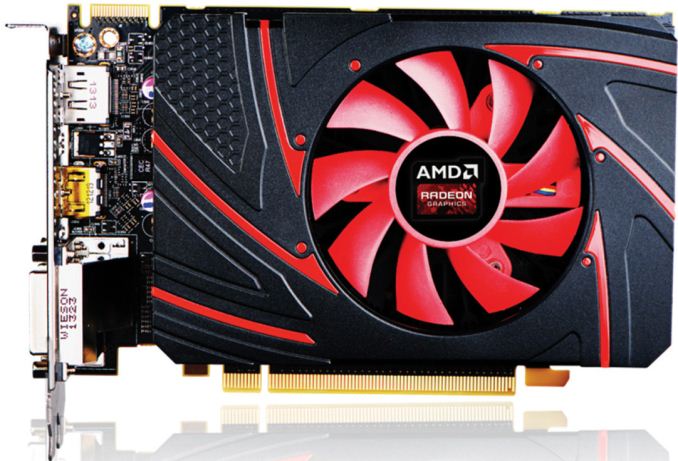
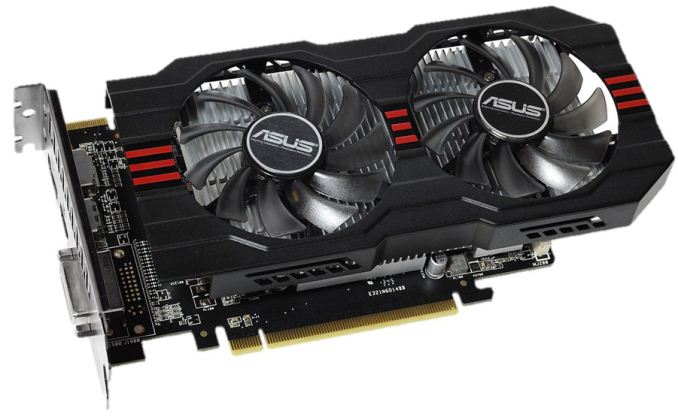

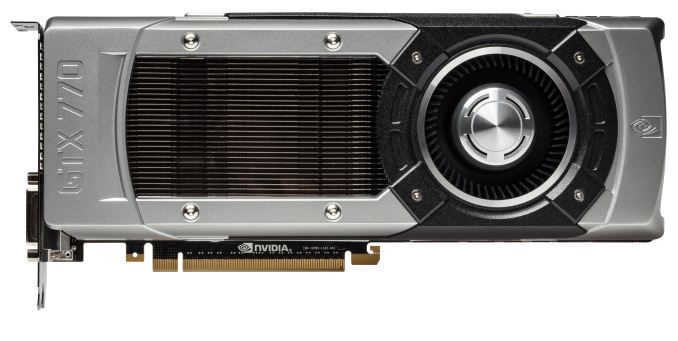
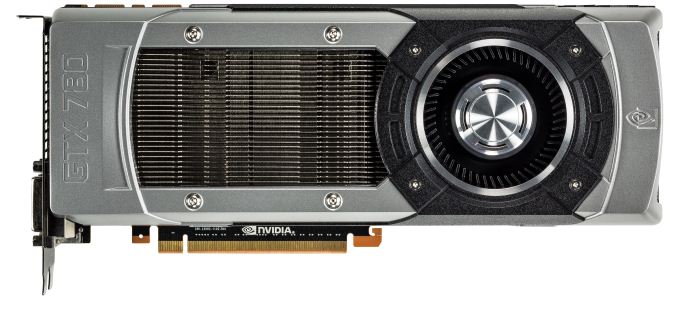
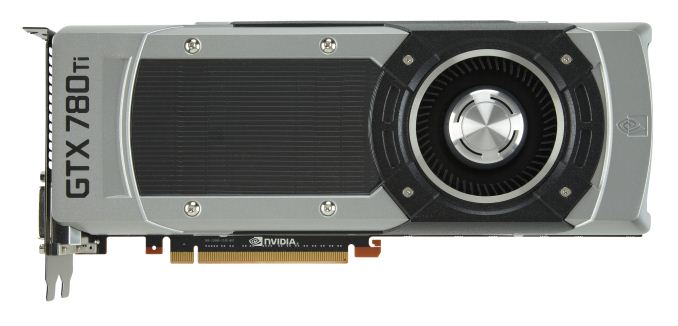
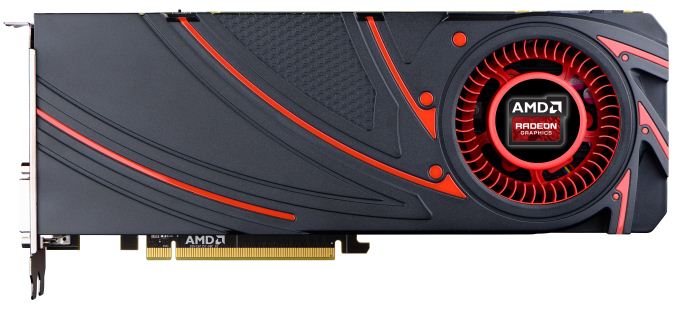








53 Comments
View All Comments
Homeles - Monday, March 24, 2014 - link
Huh, it's almost as if AT isn't biased :)Hrel - Thursday, March 27, 2014 - link
You mean like they always do? If anything you should be surprised that there's Nvidia in there at all.slickr - Monday, March 24, 2014 - link
I'm waiting for $150 AMD Radeon R9 270X and GTX 760.The GTX 460 1GB was $150, now in order to get the kind of performance you must spend $200+ and to get the $250 performance from back then, now you must pend $330+ most cards are custom so on average $350.
These are not realistic prices and I for one am not buying a new GPU until prices drop. I don't know what AMD and Nvidia are thinking as the PC market is shrinking, 2013 is 16% down over 2012 and 2012 was 12% down over 2011. 2014 is said to be down anywhere from 10% to 20% over 2013.
With these GPU and CPU prices its not surprising though, they are too expensive for what they offer and games are only going to become more demanding now that the new consoles are and even though the consoles lack in performance right now, as development process matures and companies start abandoning development for PS3 and Xbox360 we are going to see a lot more demanding games for the consoles and a current $150 card will not be able to keep up with those games.
nathanddrews - Monday, March 24, 2014 - link
"The GTX 460 1GB was $150, now in order to get the kind of performance you must spend $200+"The GTX 460 1GB was $230 at launch in 2010 ($250 adjusted for inflation), which is the same launch price as the GTX 660 which is much more powerful.
The new 750ti is $150. Using AT Bench, it performs quite closely to the GTX 480 which launched at $499 ($540 inflation) while consuming 60% less power:
http://www.anandtech.com/bench/product/1135?vs=113...
minijedimaster - Monday, March 24, 2014 - link
"we are going to see a lot more demanding games for the consoles and a current $150 card will not be able to keep up with those games."http://www.anandtech.com/bench/product/1034?vs=112...
I don't get it, the PS4/XBONE uses a modified AMD 7870 GPU. The 7870 performs pretty close to the $150 recommendation R7 265.
Considering the GPU in the consoles will never be changed, games made for them will be capped in performance and capabilities right there. If I buy the R7 265 today it will run all upcoming next gen console games for the next couple of years at least. Even then, if I really wanted too, I can always upgrade it after a couple of years at the same price point and be even faster costing me a total of $300 as opposed to $500/$600 of a console. Your argument for being too expensive doesn't make sense. (lets not even mention how much I save on games themselves over consoles with Steam sales and the like)
Penti - Monday, March 24, 2014 - link
Your computer is not a console, all it's software is different. The PC-port (or original platform) will not be optimised around R7-265 (GCN 1.0) and Windows, and storage isn't as limited on PC's. The games will get harder to drive, a late PS3-port is fine on R7-265 or there about, but running newer AAA-titles will be tougher, and you don't really want to go the route that console do, you do not want to go 30 fps. Consoles have low level access, teams of developers that fixes issues and do optimisation on that platform alone. PC's have different drivers, changes and so on.Coztomba - Monday, March 24, 2014 - link
For people outside the US who aren't effected by the coin mining craze like here in Australia, I can get a 3GB 280x $40 or so cheaper than a 2GB gtx 770. Assuming the AMD will be a better buy for me?piroroadkill - Monday, March 24, 2014 - link
Yes. I feel this article should have made that clearer, because not everyone who reads this is in the US.Ryan Smith - Tuesday, March 25, 2014 - link
Sorry about that. In case it's not clear, all of these buyers guides are going to be US-centric.HighTech4US - Monday, March 24, 2014 - link
Great another site recommending a ghost card. You can hear about it but never touch it.The R7 265 is never in stock but for a few hours. Even the one $20 higher for $169.99 isn't in stock.
http://www.newegg.com/Product/ProductList.aspx?Sub...